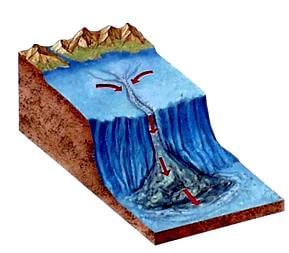UPSC Exam > UPSC Tests > Geography (Prelims) by Valor Academy > Test: Water (Oceans) - UPSC MCQ
Test: Water (Oceans) - UPSC MCQ
Test Description
10 Questions MCQ Test Geography (Prelims) by Valor Academy - Test: Water (Oceans)
Test: Water (Oceans) for UPSC 2025 is part of Geography (Prelims) by Valor Academy preparation. The Test: Water (Oceans) questions and answers have been
prepared according to the UPSC exam syllabus.The Test: Water (Oceans) MCQs are made for UPSC 2025 Exam. Find important
definitions, questions, notes, meanings, examples, exercises, MCQs and online tests for Test: Water (Oceans) below.
Solutions of Test: Water (Oceans) questions in English are available as part of our Geography (Prelims) by Valor Academy for UPSC & Test: Water (Oceans) solutions in
Hindi for Geography (Prelims) by Valor Academy course. Download more important topics, notes, lectures and mock
test series for UPSC Exam by signing up for free. Attempt Test: Water (Oceans) | 10 questions in 10 minutes | Mock test for UPSC preparation | Free important questions MCQ to study Geography (Prelims) by Valor Academy for UPSC Exam | Download free PDF with solutions
Detailed Solution for Test: Water (Oceans) - Question 1
Detailed Solution for Test: Water (Oceans) - Question 2
Detailed Solution for Test: Water (Oceans) - Question 3
Test: Water (Oceans) - Question 4
The relief feature of oceanic floor shown in the given picture is

Detailed Solution for Test: Water (Oceans) - Question 4
Test: Water (Oceans) - Question 5
The salinity increases with depth and there is a distinct zone called
Detailed Solution for Test: Water (Oceans) - Question 5
Detailed Solution for Test: Water (Oceans) - Question 6
Test: Water (Oceans) - Question 7
The factor affecting the distribution of temperature of ocean water is
Detailed Solution for Test: Water (Oceans) - Question 7
Detailed Solution for Test: Water (Oceans) - Question 8
Detailed Solution for Test: Water (Oceans) - Question 9
Test: Water (Oceans) - Question 10
Which one of the following is not a minor relief feature in the oceans:
Detailed Solution for Test: Water (Oceans) - Question 10
|
47 videos|183 docs|155 tests
|
Information about Test: Water (Oceans) Page
In this test you can find the Exam questions for Test: Water (Oceans) solved & explained in the simplest way possible.
Besides giving Questions and answers for Test: Water (Oceans), EduRev gives you an ample number of Online tests for practice


















